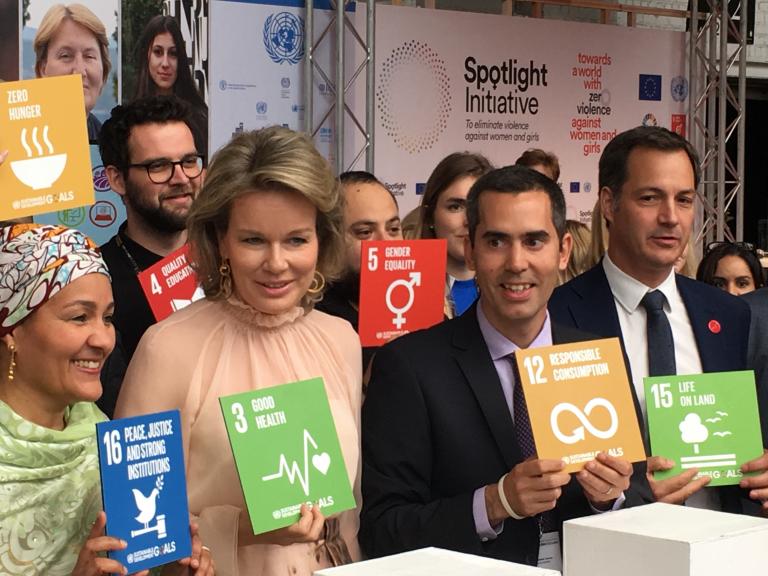-
Last updated on

In the past, the EU has provided schooling for these vulnerable children in Bangladesh. © European Union
In the past, the EU used various funding instruments for its external action. For example, it drew from the European Development Fund for its development cooperation with the ‘ACP countries’ (Africa, Caribbean, Pacific). That fund was fed directly by the EU Member States and was not part of the EU budget. As a result, the European Parliament had no say in it.
In addition, there was a European Neighbourhood and Partnership Instrument, which specifically supported Eastern (Ukraine, etc.) and Southern (North Africa, Middle East) ‘neighbourhoods’. The Development Cooperation Instrument provided for, among other things, cooperation with other regions such as Latin America and Asia.
Simpler, more flexible, more visible and more effective
This is now coming to an end. Just about all external financing instruments are being regrouped into a single Neighbourhood, Development and International Cooperation Instrument (NDICI) – or Global Europe. The instrument has 79.5 billion euros at its disposal for the 2021-2027 period, a 12% increase. The funds will ideally go to the countries with the greatest needs: least developed and low-income countries, fragile countries, countries in crisis, etc.
The refresh will make the EU's external action simpler, more flexible, more visible and more effective. The EU will also be better able to meet its political priorities, such as the promotion of its values and interests for a more stable and peaceful world. Global Europe will support the recovery from the COVID-19 pandemic and contribute significantly to the Sustainable Development Goals and the Paris Climate Agreement.
The budget is divided across 4 pillars:
- Geographical (€60.39 billion): dialogue and cooperation with third countries (Sub-Saharan Africa, Latin America, North Africa and Middle East, etc.)
- Thematic (€6.36 billion): human rights & democracy; civil society; peace, stability & conflict prevention; global challenges such as health, education and empowering women.
- Rapid response (€3.18 billion): stability and conflict prevention in the event of crisis, increasing resilience, etc.
- Unforeseen challenges and priorities (€9.53 billion)
Global Europe also includes an investment framework to attract additional funds for sustainable development from both the public and private sectors. In total, the EU aims to mobilise more than half a trillion euros for 2021-2027.
The EU is assuming that 93% of Global Europe's spending qualifies as ‘Official Development Assistance’ (ODA). 30% should flow to climate action, 10% to managing migration. 20% should address global inequality, 85% should contribute in some way to greater gender equality.
Belgium vigorously supports the new way of working. In any case, our country will continue to work to see its policy priorities included in EU-funded programmes, whether or not through alliances with like-minded Member States. Our thematic and geographical services at the headquarters and, of course, our diplomatic network – our antennae on the ground – will play a crucial role in this.
Find out more?
Read the factsheet.
More on Cooperation
EU: better waste management protects Lake Tanganyika
De EU wil het Tanganyikameer (Centraal-Afrika) helpen beschermen als bron van water, voedsel en inkomsten. Didier Cadelli, coörd...

Carlo Di Antonio (Dour): a library of the future with EU support
With European money, Mayor Carlo Di Antonio is building a library of the future in Dour, including a center for remote working. ...

H.M.Q. Mathilde: ‘The SDGs must be put at the top of the global agenda’
Interview - The Sustainable Development Goals (SDGs) form a roadmap towards a better world in 2030. There are just under 10 year...
